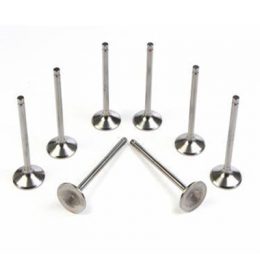Marine Engine Connecting Rods: The Ultimate Guide
Introduction
Connecting rods are a crucial part of any marine engine. They connect the piston to the crankshaft and transfer the power generated by the combustion process to the crankshaft. Choosing the right connecting rod can significantly enhance the performance and durability of your marine engine. In this ultimate guide, we will discuss everything that you need to know about marine engine connecting rods.
Types of Connecting Rods
Connecting rods come in various shapes and sizes, and each type has its unique characteristics. The most common types of connecting rods are:
- Steel Connecting Rods
- Aluminum Connecting Rods
- Titanium Connecting Rods
Steel connecting rods are the most traditional and commonly used type of connecting rod. They are heavy and durable, making them ideal for high-performance marine engines. Aluminum connecting rods are lighter and more flexible than steel rods. They are ideal for marine engines that require high RPMs. Titanium connecting rods are the most expensive type of connecting rod, but they are incredibly light and durable. They are used in high-performance marine engines to reduce weight and improve engine efficiency.
How to Choose the Right Connecting Rod
Choosing the right connecting rod for your marine engine depends on several factors, including engine power, RPM, and intended use. For high-performance marine engines, titanium connecting rods are the best option because they are light and durable. For marine engines that require high RPMs, aluminum connecting rods are ideal because they are flexible and can withstand high stress. For marine engines that require high torque, steel connecting rods are the best option because they are strong and durable.
Connecting Rod Maintenance
Proper maintenance of your marine engine connecting rods can significantly enhance their durability and performance. Some tips for connecting rod maintenance include:
- Regularly inspecting the connecting rods for signs of wear and tear
- Avoiding overloading the engine, which can cause stress on the connecting rods
- Regularly changing the oil to prevent debris buildup in the engine
- Avoiding sudden changes in RPMs, which can cause stress on the connecting rods
Conclusion
Connecting rods are a crucial part of any marine engine, and choosing the right connecting rod can significantly enhance the engine’s performance and durability. By understanding the different types of connecting rods, how to choose the right one, and proper maintenance tips, you can ensure that your marine engine runs smoothly and efficiently for years to come.



